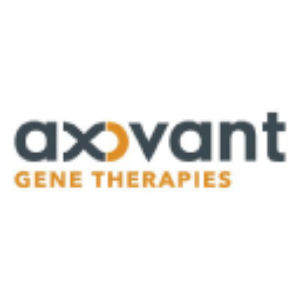Axovant Gene Therapies Receives Rare Pediatric Disease Designation for AXO-AAV-GM1 for GM1 Gangliosidosis
Axovant Gene Therapies Ltd. (AXGT) received Rare Pediatric Disease Designation from the FDA for its gene therapy AXO-AAV-GM1, targeting GM1 gangliosidosis. This AAV9-based therapy offers a single intravenous administration and is currently in Phase 1/2 trials. It holds both Rare Pediatric and Orphan Drug designations, emphasizing its potential in treating a fatal pediatric disease with no existing treatment options. Axovant anticipates reporting 6-month data from the juvenile cohort by Q4 2020 and plans to start a high-dose cohort study in the latter half of 2020.
- Received FDA Rare Pediatric Disease Designation for AXO-AAV-GM1.
- AXO-AAV-GM1 is the only gene therapy for both Type I and Type II GM1 gangliosidosis.
- Preclinical studies support the efficacy of AXO-AAV-GM1 in enhancing enzyme activity and survival rates.
- Currently, there are no approved treatments for GM1 gangliosidosis, indicating high market risk.
- Results from the ongoing clinical studies are uncertain and may not meet expectations.
Insights
Analyzing...
Company on-track to report data from ongoing Phase 1/2 clinical study in Q4 2020
NEW YORK, Oct. 09, 2020 (GLOBE NEWSWIRE) -- Axovant Gene Therapies Ltd. (NASDAQ: AXGT), a clinical-stage company developing innovative gene therapies for neurological diseases, today announced that it has received Rare Pediatric Disease Designation from the U.S. Food and Drug Administration (FDA) for AXO-AAV-GM1, an AAV9-based gene therapy delivered via a single intravenous administration that is in Phase 1/2 development for GM1 gangliosidosis. In addition to the Rare Pediatric Disease designation, AXO-AAV-GM1 has Orphan Drug designation and is the only gene therapy in clinical development for both infantile (Type I) and juvenile (Type II) GM1 gangliosidosis.
“Receiving Rare Pediatric Disease Designation in addition to the previously granted Orphan Drug Designation for AXO-AAV-GM1 highlights the importance of expediting a therapy for GM1 Gangliosidosis, a progressive, fatal, pediatric disease with no approved treatment options,” said Sean O’Bryan, Senior Vice President, Regulatory Affairs & Quality. “AXO-AAV-GM1 is the first gene therapy to enter clinical trials for GM1 gangliosidosis and has the potential to provide meaningful clinical benefit to both Type I and Type II patients.”
Axovant is on-track to report 6-month Stage 1 data from the low dose juvenile cohort (Type II) by the fourth quarter of 2020, and expects to initiate the high dose cohort which includes infantile (Type I) and juvenile (Type II) patients in the second half of 2020.
GM1 Gangliosidosis is a progressive and fatal pediatric lysosomal storage disorder caused by mutations in the GLB1 gene leading to impaired production of the β-galactosidase enzyme. Currently, there are no approved treatment options for GM1 Gangliosidosis.
The FDA defines a rare pediatric disease as a serious or life-threatening disease in which the disease manifestations primarily affect individuals aged from birth to 18 years. Pediatric diseases recognized as “rare” affect under 200,000 people in the United States.
About AXO-AAV-GM1
AXO-AAV-GM1 is an investigational gene therapy that delivers a functional copy of the GLB1 gene via an adeno-associated viral (AAV) vector, with the goal of restoring β-galactosidase enzyme activity for the treatment of GM1 gangliosidosis. The gene therapy is delivered intravenously, which has the potential to broadly transduce the central nervous system and treat peripheral manifestations of the disease as well. Preclinical studies in murine and a naturally-occurring feline model of GM1 gangliosidosis have supported AXO-AAV-GM1’s ability to improve β-galactosidase enzyme activity, reduce GM1 ganglioside accumulation, improve neuromuscular function, and extend survival.
In 2018, Axovant licensed exclusive worldwide rights from the University of Massachusetts Medical School for the development and commercialization of gene therapy programs for GM1 gangliosidosis and GM2 gangliosidosis, including Tay-Sachs and Sandhoff diseases.
About Axovant Gene Therapies
Axovant Gene Therapies is a clinical-stage gene therapy company focused on developing a pipeline of innovative product candidates for debilitating neurodegenerative diseases. Our current pipeline of gene therapy candidates targets GM1 gangliosidosis, GM2 gangliosidosis (also known as Tay-Sachs disease and Sandhoff disease), and Parkinson’s disease. Axovant is focused on accelerating product candidates into and through clinical trials with a team of experts in gene therapy development and through external partnerships with leading gene therapy organizations. For more information, visit www.axovant.com.
Forward-Looking Statements
This press release contains forward-looking statements for the purposes of the safe harbor provisions under The Private Securities Litigation Reform Act of 1995 and other federal securities laws. The use of words such as “intended”, "may," "might," "will," "would," "should," "expect," "believe," "estimate," and other similar expressions are intended to identify forward-looking statements. For example, all statements Axovant makes regarding costs associated with its operating activities are forward-looking. All forward-looking statements are based on estimates and assumptions by Axovant’s management that, although Axovant believes to be reasonable, are inherently uncertain. All forward-looking statements are subject to risks and uncertainties that may cause actual results to differ materially from those that Axovant expected. Such risks and uncertainties include, among others, the impact of the Covid-19 pandemic on our operations, the initiation and conduct of preclinical studies and clinical trials; the availability of data from clinical trials; the scaling up of manufacturing, the expectations for regulatory submissions and approvals; the continued development of our gene therapy product candidates and platforms; Axovant’s scientific approach and general development progress; and the availability or commercial potential of Axovant’s product candidates. These statements are also subject to a number of material risks and uncertainties that are described in Axovant’s most recent Quarterly Report on Form 10-Q filed with the Securities and Exchange Commission on August 11, 2020, as updated by its subsequent filings with the Securities and Exchange Commission. Any forward-looking statement speaks only as of the date on which it was made. Axovant undertakes no obligation to publicly update or revise any forward-looking statement, whether as a result of new information, future events or otherwise.
Contacts:
Media & Investors
Josephine Belluardo, Ph.D.
LifeSci Communications
646-751-4361
jo@lifescicomms.com
media@axovant.com
Parag Meswani
Axovant Gene Therapies Ltd.
(212) 547-2523
investors@axovant.com







